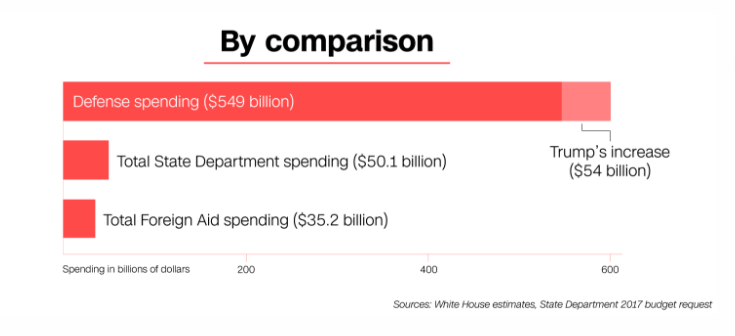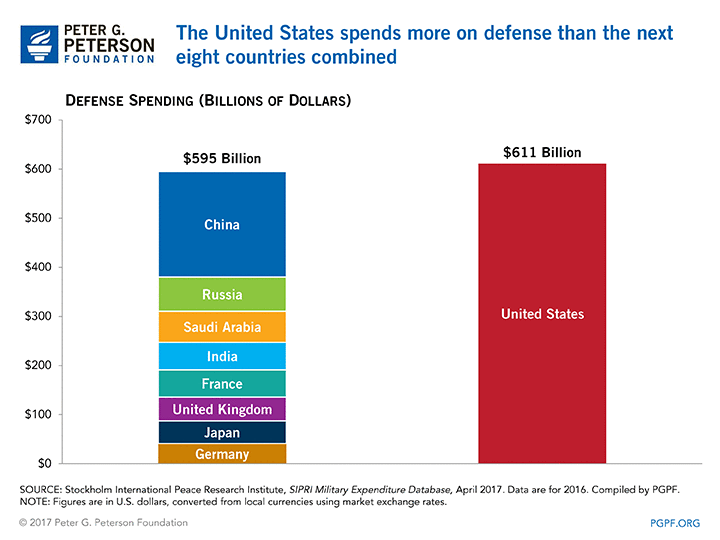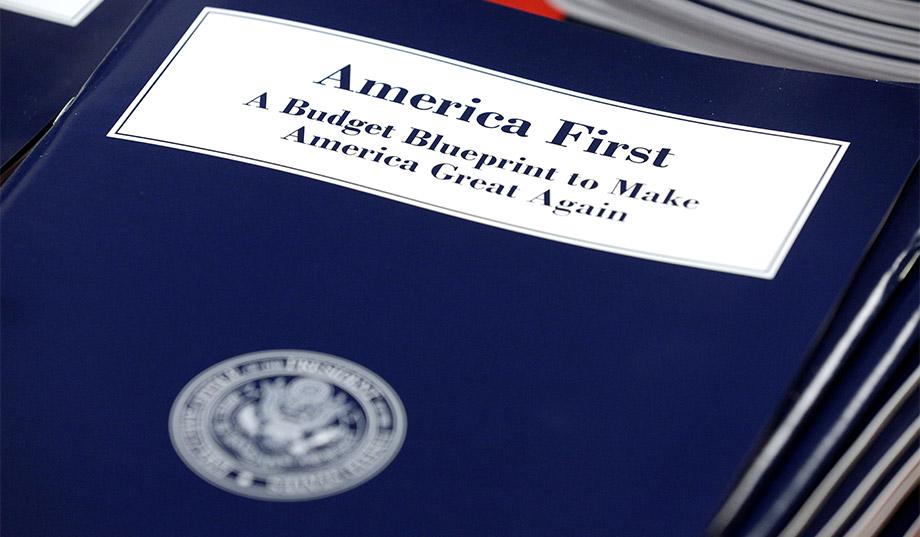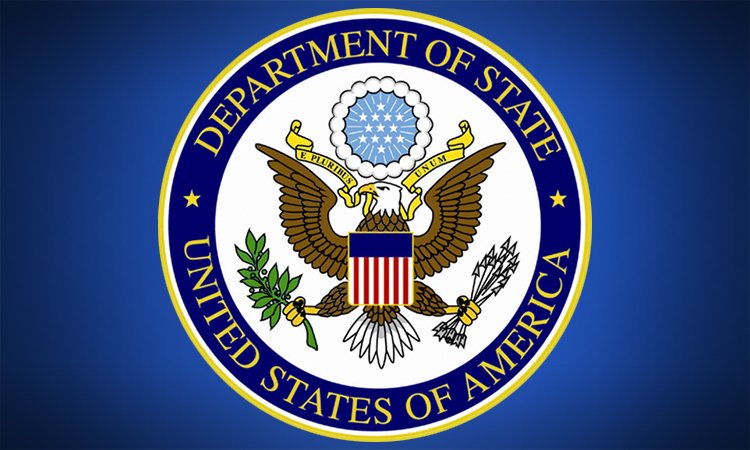In late February, President Donald Trump released his budget plan for fiscal year 2018. This budget plan calls for historic increases in national defense and homeland security spending while cutting a multitude of non-defense-related programs such as environmental agencies, public broadcasting services, and foreign affairs departments. Because of these drastic increases in national security, many pundits have called this budget the “America first budget,” prioritizing America’s defense over all else. Although the final budget is unlikely to pass as is, it does serve as a blueprint for Congress. This “skinny budget” shows the Trump Administration’s priorities in government spending. As a result, it’s imperative to understand the sectors of government that the Trump administration has deemed more important than others and understand the potential impacts on the American people.


To begin, the Trump administration has called for a 54-billion-dollar hike in spending for national security (around a 10%increase.) This will result in spending cuts across the board for other government programs. Many have claimed that this level of increase is uncalled for especially considering that the United States spends more money on the military than the next seven countries combined. This unfounded fear of other countries catching up to our military prowess is baseless as the numbers continue to support the fact that we outspend every potential enemy by an enormous amount. In addition, this budget calls for the increase in the allocation to homeland security by nearly 2.8 billion dollars (7%increase) and a 4.4 billion dollar increase in veteran affairs (6%increase). Although an increase in these budgets may benefit our borders and veterans, it comes at the cost of many other programs.
One of the most devastating cuts comes to the Environmental Protection Agency (EPA). Trump proposed a 31% cut to the EPA, which would result in a decrease of 2.4 billion dollars in spending for the agency. As a result of this budget, many programs will either get shuut down or lose major funding. For example, the Office of Research and Development Program would be cut nearly in half, leaving the department with only 250 million dollars of operating funds. This program is crucial to developing pivotal studies about the environment. In addition, many specific cleanup projects will be cut in this proposal such as the Chesapeake Bay cleanup project. This project allows for states to coordinate efforts to reduce pollution but will fail without the EPA directing and aiding the states along the way. In addition, the EPA Office of Chemical Safety and Pollution Prevention program screens and tests endocrine disruptors (chemicals that harm reproductive health in addition to children’s growth and development). Potentially putting the health of children and adults across the U.S. at risk, the Trump budget would cut this program’s funding from 7.5 million to $445,000. The list goes on and on as the budget calls for the elimination of “more than 50 EPA programs”. While the cuts have been proposed in the name of saving ill-used government funds, the EPA, notably, only constitutes .2% of the federal government. This further proves the claim that the Trump Administration didn’t cut these agencies to save money but to clearly articulate the administration’s priorities.
The State Department is another agency that will also face major cuts under this budget proposal. An estimated 10.9 billion dollars will be lost resulting in a 29% decrease from old levels. This will also result in many different programs within the agencies to lose funding. Programs like the Global Climate Change Initiative would be eliminated. As a result, the U.S. would no longer be making payments to the Green Climate Fund, a U.N. effort to help develop low-emission technology. One of the biggest cuts, however, will be to the peacekeeping missions. These are unbiased missions conducted by the U.N. interventions for the purpose of mitigating conflict. According to The Hill, almost 1 billion dollars will be cut from peacekeeping missions (20%decrease), and this cut reinforces the “America first” rhetoric Trump has been using throughout his presidency.
The Labor Department will also face a 2.5 billion dollar cut (21% decrease). The cuts may increase after Labor Secretary Alexander Acosta claimed he will ““diminish an already enfeebled Occupational Safety and Health Administration (OSHA) – putting millions of workers at greater risk of accident and injury.” There have been estimates that nearly 11 million dollars could be cut from this necessary administration. Senator Maggie Hassan (D – N.H) questioned how these cuts would affect OHSA enforcement. The Senator used her own state of New Hampshire as an example of the need for OSHA enforcement. New Hampshire only has seven inspectors but has nearly 50,000 worksites, making it nearly impossible for inspectors to thoroughly investigate these many work areas (almost 7,000 worksites per inspector). Taking funding from the OSHA would endanger the lives of many hardworking Americans, and the money allocated to this program is crucial for the well-being of our working class.

There were many other proposed slashes to the budget. The illustration above shows how each agency was affected. It is important to remember that within each agency, many specific programs that aided Americans have been eliminated or the funding has been decreased. For example, the Health and Human Services Department will lose 12.6 billion dollars (16% decrease) and the Education Department will lose nearly 9.2 billion dollars (14% decrease)
In totality, this budget has prioritized two key issues – national defense and homeland security — over a variety of other programs. By no means are budget changes always harmful; every president has some level of discrepancy in the budget. However, hefty changes like this are rare and the impact can be widespread. The Trump administration has obviously chosen to ignore dire issues such as climate change and the environment at the cost of putting “America first”. Although the passage of this budget in its current form is unlikely, the path that it has set for Congress is one that will be perilous.


